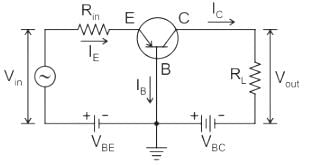Test: BJT Construction & Operation - Electronics and Communication Engineering (ECE) MCQ
10 Questions MCQ Test GATE ECE (Electronics) Mock Test Series 2026 - Test: BJT Construction & Operation
Which of the following is not a valid type of BJT?
In a BJT, which of the following layers is heavily doped?
What is the typical order of magnitude of the base current for a BJT?
Which of the following currents in a BJT is also called leakage current?
Considering the resistances of emitter, collector and base to be Re, Rc and Rb respectively, which of the following is the correct statements?
For a BJT, what is typically the shape of the power dissipation curve, if it’s plotted on the output characteristics?
If the positive lead of a DMM, with the mode set to ohmmeter is connected to the base and the negative lead to the emitter and a low resistance reading is obtained, then what is the type of transistor that is being tested?
An enhancement type NMOS transistor with V1 = 0.7 V and source terminal grounded and 1.5 V applied to the gate. In what region does the device operate for VD = 0.5 V?
Which of the following parameters will be very high in the common base configuration of a bipolar junction transistor?
|
26 docs|263 tests
|















